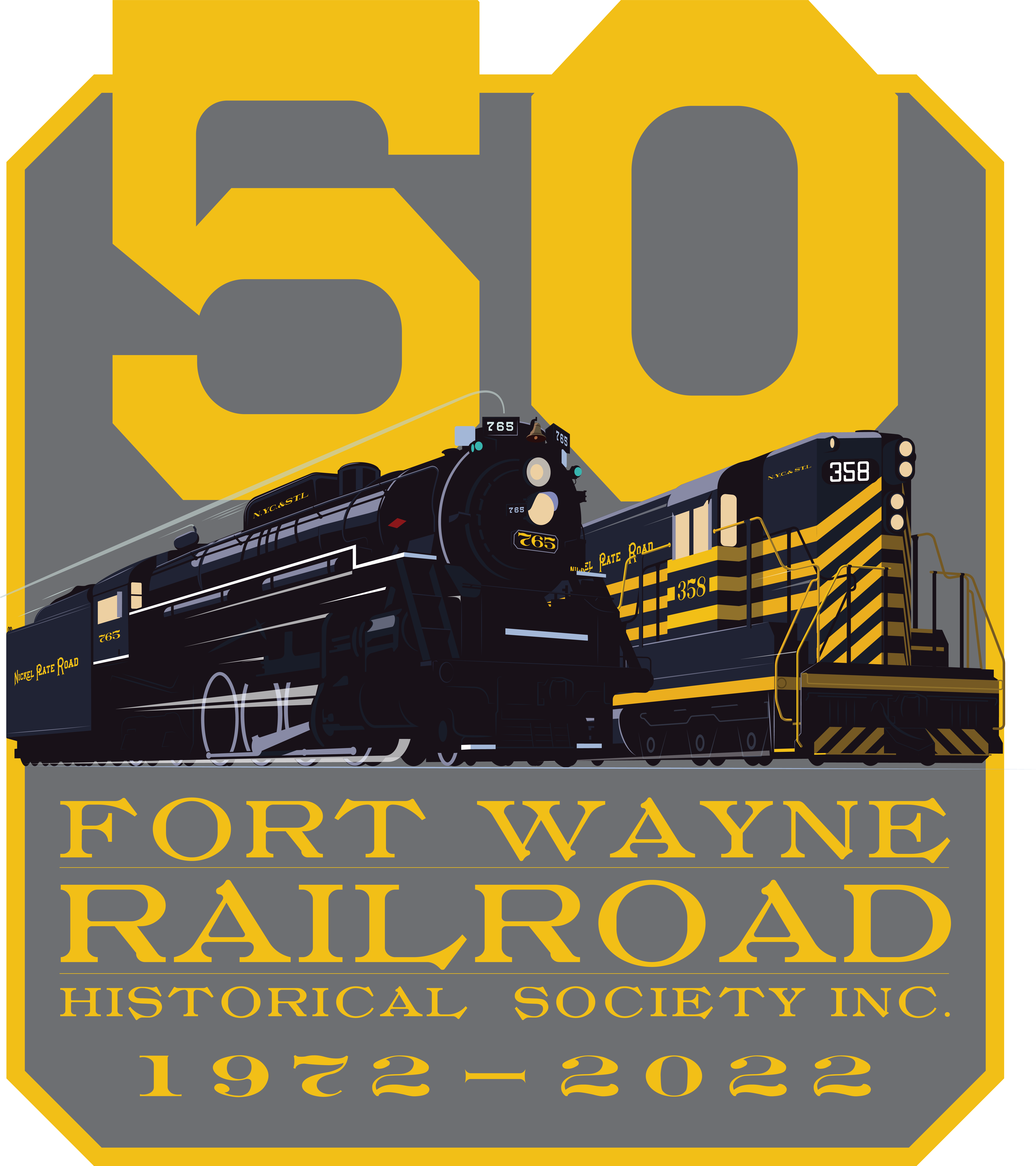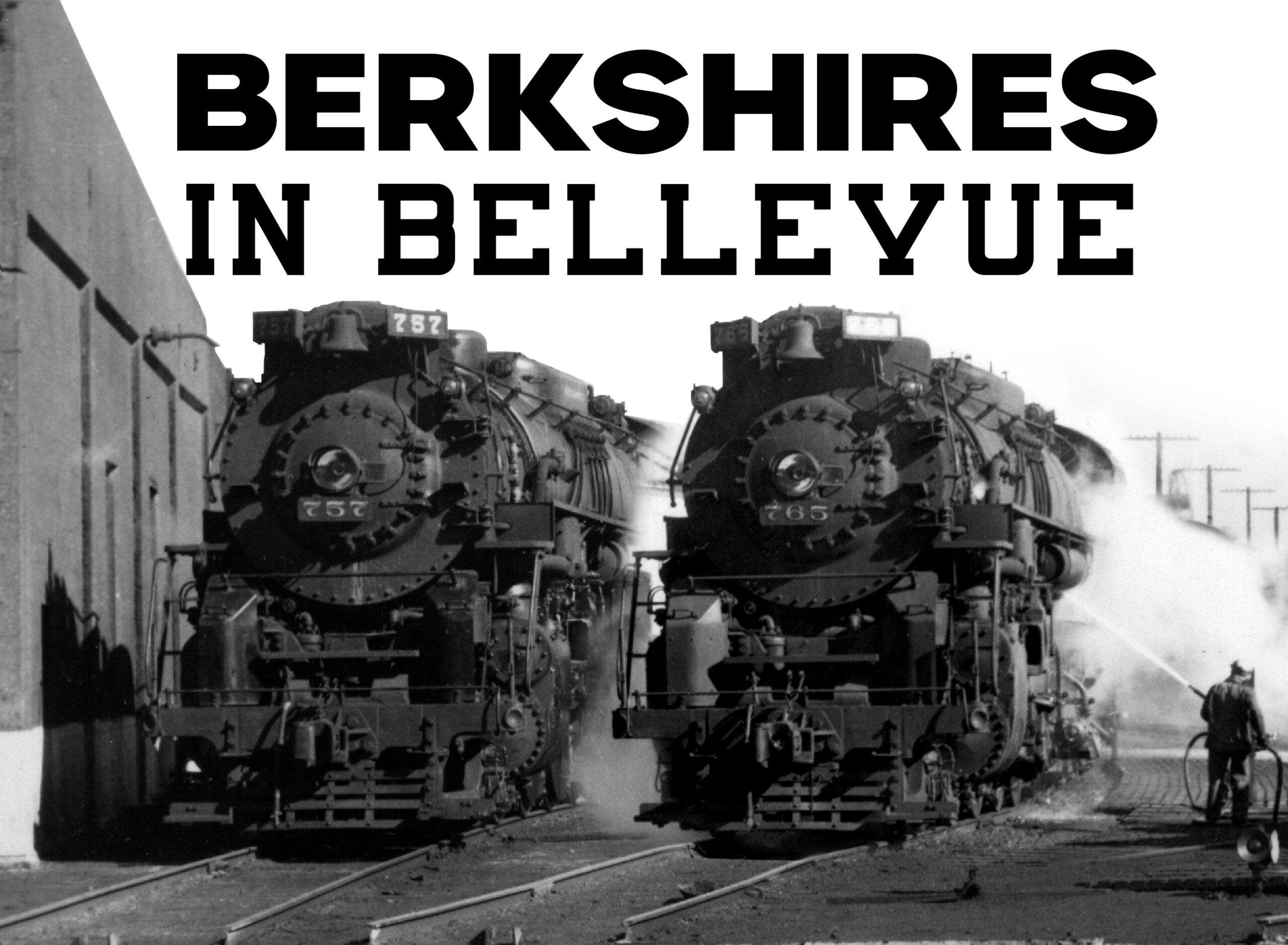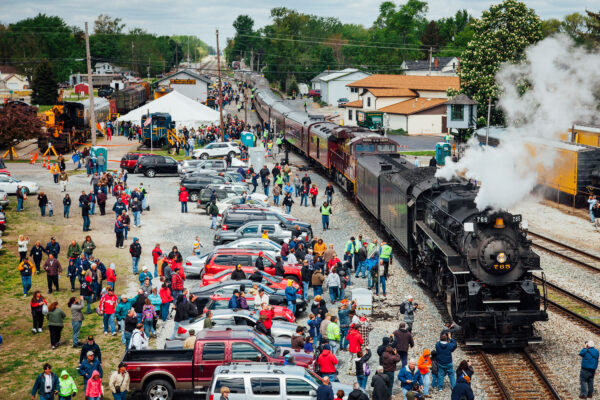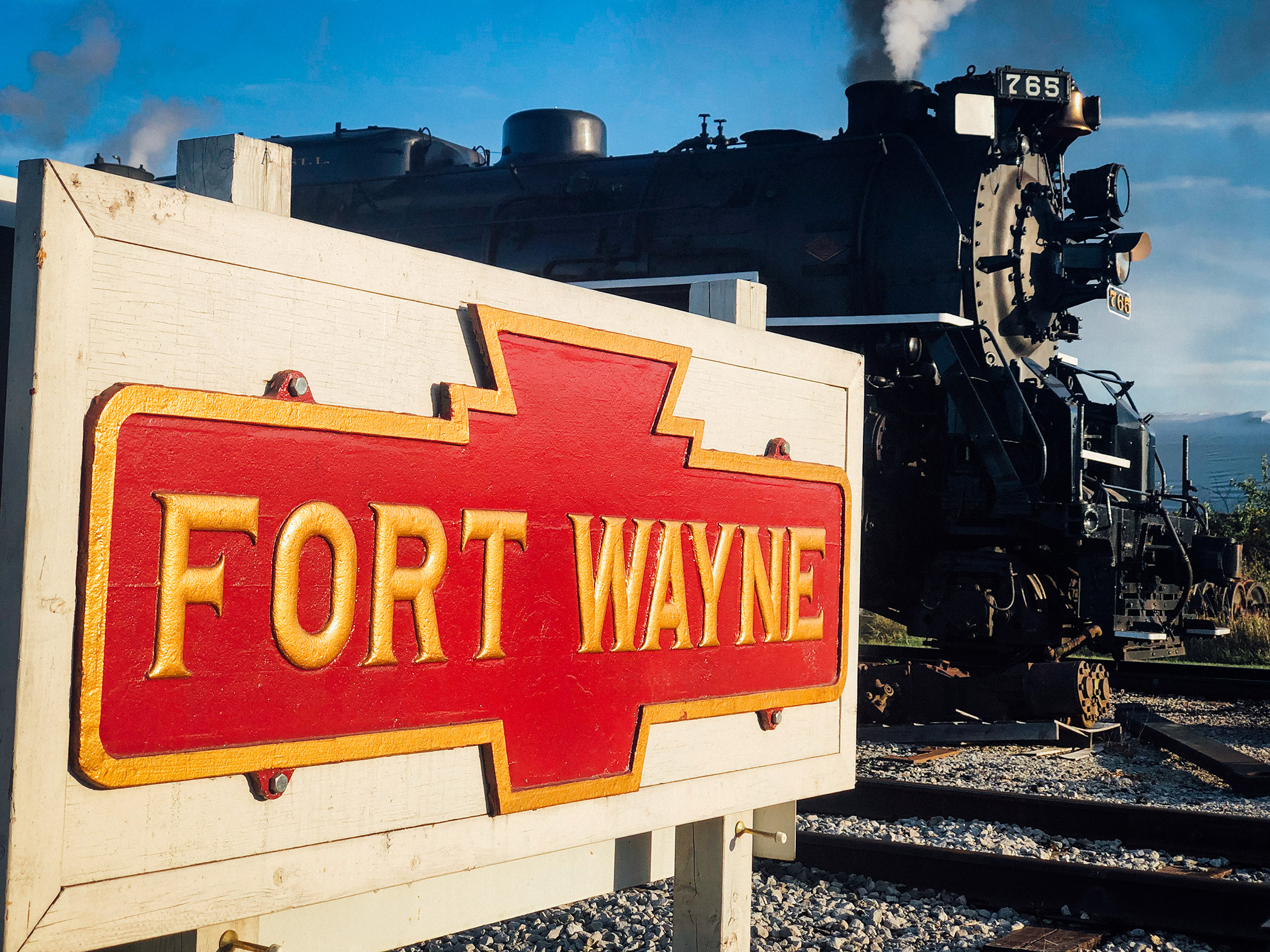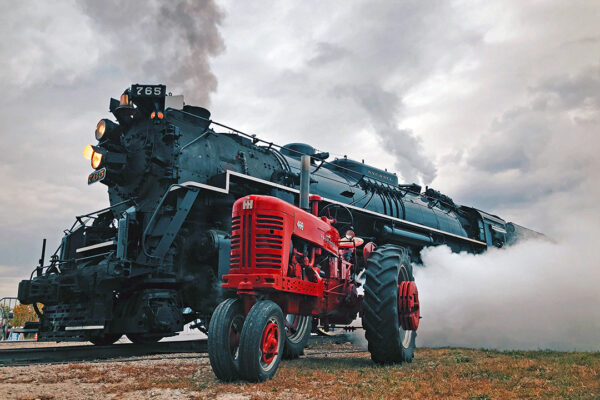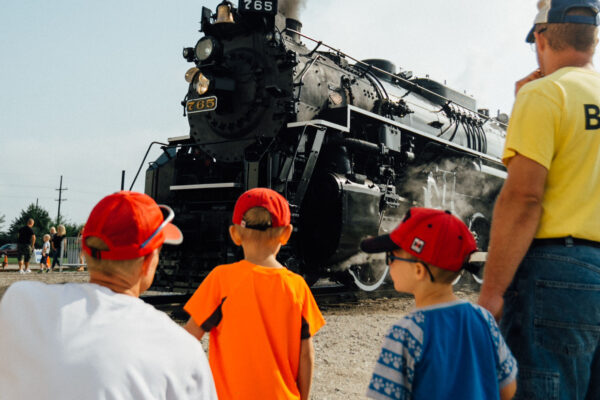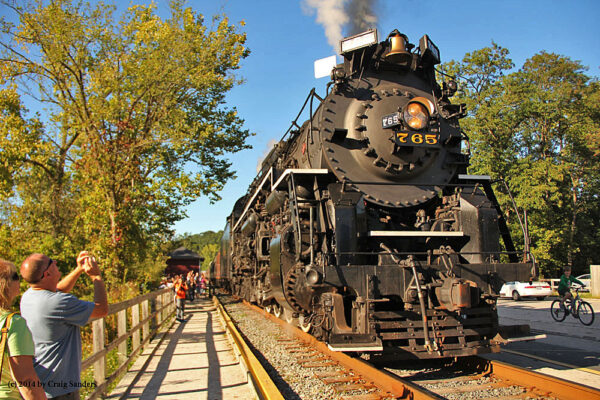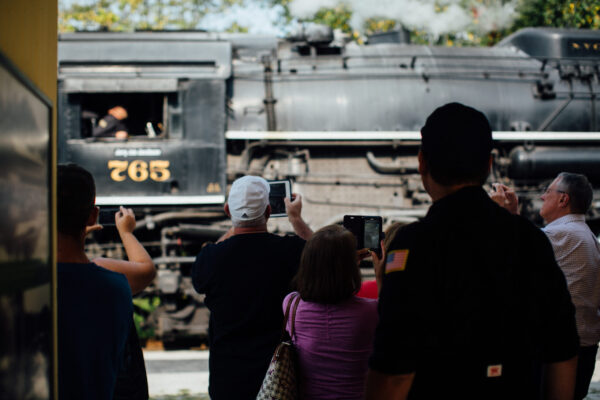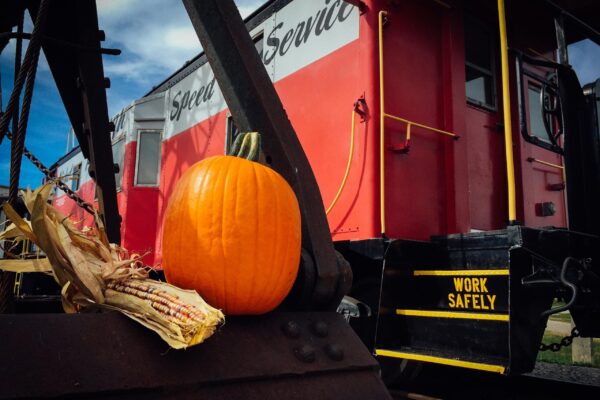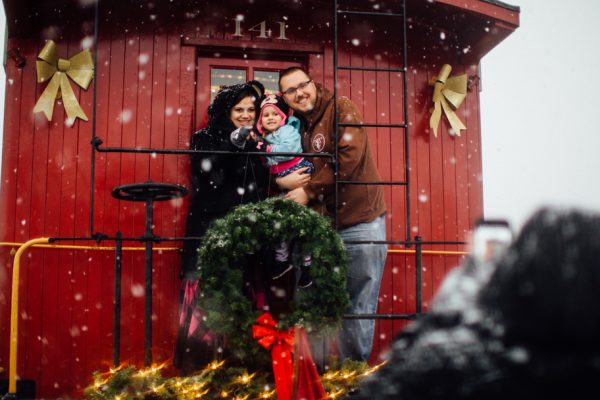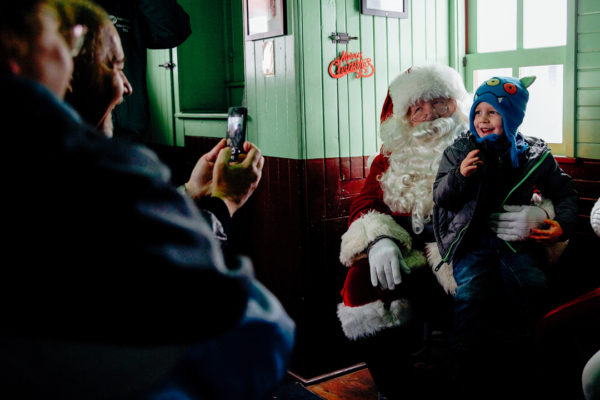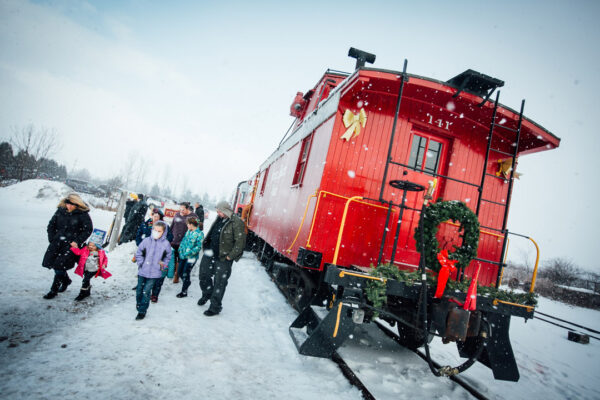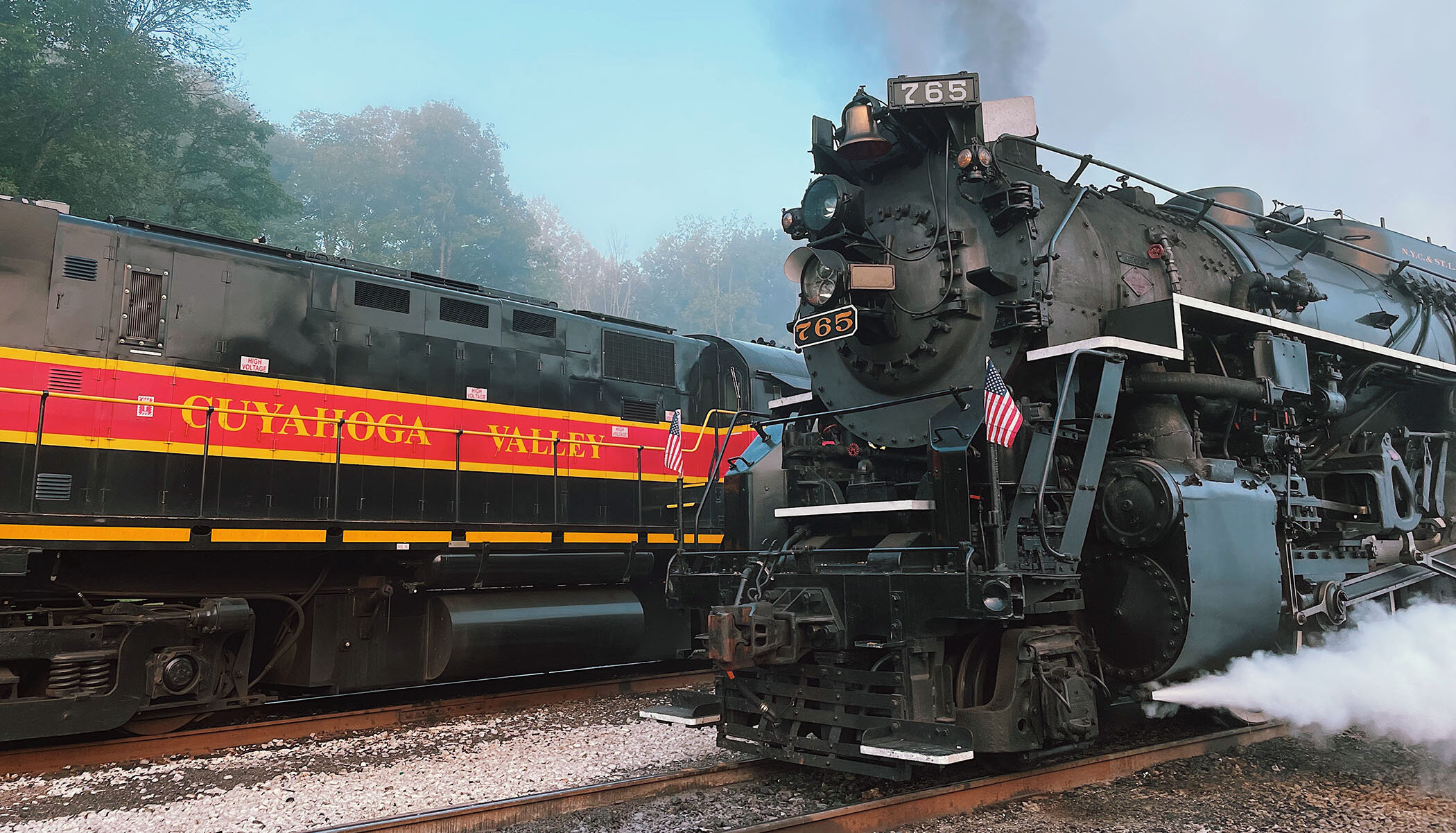
Two celebrated non-profit organizations set to commemorate their 50th Anniversaries with special events planned for May
INDEPENDENCE, OHIO – Cuyahoga Valley Scenic Railroad (CVSR) and the Fort Wayne Railroad Historical Society, Inc. (FWRHS) will once again partner to host “Steam in the Valley” and bring historic steam locomotive no. 765., a fourteen-wheeled, time machine that stands 15 feet tall and weighs 404 tons to the Cuyahoga Valley.
Steam in the Valley will be held for the first time in May on the 13-15 and 20-22. 2022 will mark the 50th anniversaries for both organizations and a decade of collaborating to bring the exciting sights and sounds of historic steam railroading to the Cuyahoga Valley Steam in the Valley will be the first major event held this year for both organizations as they celebrate their 50th anniversaries. Steam in the Valley will include a variety of historical train experiences for passengers of all ages.
As part of the living history event, all riders are invited to dress in their best 1950s attire, with prizes available for best-dressed passengers. Tickets are on sale now at cvsr.org/steam.
Founded in 1972 by private citizens seeking to preserve remnants of the steam railroad era, CVSR operates through the Cuyahoga Valley National Park, over what was once the Baltimore & Ohio Railroad. Since then, it has offered train rides and alternative transportation through the park and welcomes more than 150,000 visitors a year.
“Steam in the Valley has become an annual tradition at the railroad,” said Joe Mazur, CVSR President and CEO. “Steam locomotives ran on the same tracks through the Cuyahoga Valley as early as the 1880s, and a steam locomotive was an integral part of CVSR’s early years, which is fitting as we celebrate our 50th Anniversary year. We look forward to bringing part of that history back again this year.”
Originally built in 1944, the 765 operated between Chicago and Buffalo, New York for the Nickel Plate Railroad, whose offices were headquartered in Cleveland. Retired in 1958 and restored by the all-volunteer group in 1979, the 765 is a roving railroad attraction and one of the last locomotives of its type in operation. Its annual visits to CVSR have welcomed more than 6,000 visitors annually from 34 states.
“In the last half-century, our organization has been proud to see the 765 emerge as a unique kind of time machine and enchant thousands of people throughout the country,” said Kelly Lynch, Vice President of the FWRHS. “These events not only fulfill our dream to enrich people’s lives with unique and educational experiences but align perfectly with the mission of CVSR to blend recreation and education with railroad history. The Cuyahoga Valley is one of our favorite venues.”
Steam in the Valley will feature day and nighttime trips. Experiences include a variety of excursions including, Dinner on the Train, Murder Mystery trains, Cocktails on Rails, night rides and photo sessions and more. Tickets range from $25-$135 depending on excursion and seating class. Tickets are on sale now and can be purchased through CVSR. To book tickets and to learn more, visit cvsr.org/steam.
About Fort Wayne Railroad Historical Society, Inc.
The Fort Wayne Railroad Historical Society, Inc. (FWRHS) is an all-volunteer not-for-profit 501(c)(3) organization that provides hands-on educational and recreational experiences through the preservation and operation of historic railroad equipment. It has operated Nickel Plate Road steam locomotive no. 765 and other vintage trains throughout the country for 50 years. For more information, visit fortwaynerailroad.org.
About Cuyahoga Valley Scenic Railroad
Cuyahoga Valley Scenic Railroad (CVSR) is a private sector, not-for-profit 501(c)(3) volunteer supported organization operating in partnership with Cuyahoga Valley National Park (CVNP) and is dedicated to the preservation of passenger rail transportation in Cuyahoga Valley and the historic Ohio & Erie Canalway. CVSR has been providing excursion rail service for 50 years. For more information about the railroad, visit CVSR.org.
